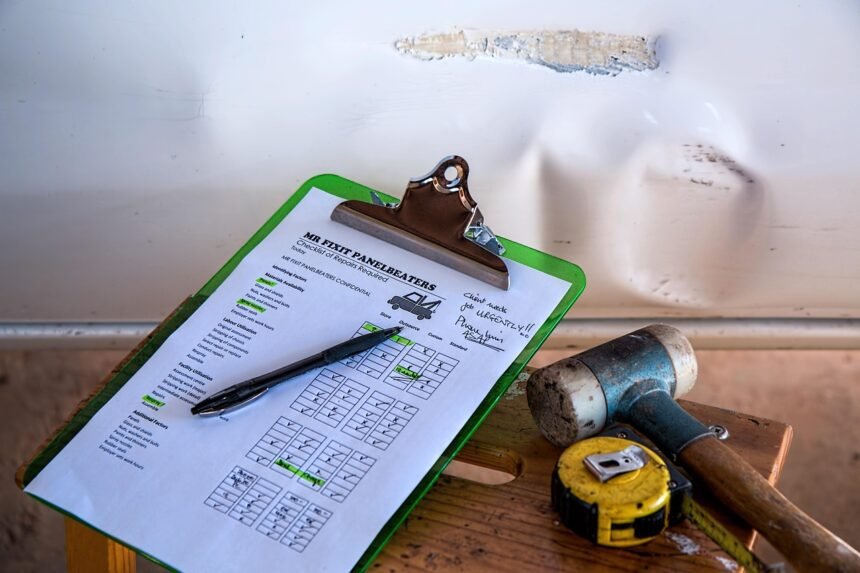Whether you are constructing a brand-new home, renovating a commercial area, or coping with a bigger development, understanding how to estimate construction costs is a key talent. While professional Construction Estimating Companies offer in-depth assistance, having a basic know-how can help you make better decisions, set more practical budgets, and communicate effectively with contractors. This manual is designed for novices and outlines the simple steps involved in estimating production expenses.
Start with a Clear Scope
Before numbers come into play, outline the overall scope of the challenge. What are you building or renovating? How massive will it be, or will it not be? What type of finishes are anticipated? Whether it’s a kitchen redecoration or a new workplace building, each element impacts the final result.
Write down everything approximately related to the mission and include drawings, notes, or references to similar builds. A clean scope makes estimating a good deal easier and more accurate.
Break the Project into Phases
Most production projects comply with a chain: site instruction, foundation, structure, roofing, systems (like electric and plumbing), finishes, and very last touches. Divide the venture into logical tiers or classes so you can estimate the value of each separately. This breakdown now not only enables you to arrange your estimate but also makes it simpler to adjust sections later if substances or timelines change.
Gather Unit Costs
Estimating calls for understanding of unit fees—how a great deal matters in line with square footage, in step with piece, or hour. For example:
Drywall may cost a little $1.50 consistent with square foot.
Framing exertions might cost $40 per hour.
Roofing shingles might be priced per package.
Research neighborhood prices online, visit providers, or talk to builders. Remember, charges vary by way of vicinity and season, so always check up-to-date information applicable to your assignment’s area.
Factor in Materials and Labor
Every production task includes primary fee agencies: materials and Lumber Takeoff. Estimate the number of materials needed for every phase, then multiply by means of the unit value. Do the same for hard work hours.
Labor: $seven-hundred
Subtotal: $2
Repeat this for each class within the venture.
Don’t Forget Equipment and Subcontractors
Some obligations require specific machinery or outdoor assistance. Will you want a backhoe for digging? A crane for lifting materials such as a tandemloc spreader beam? What is approximately hiring a plumber or an electrician?
Include gadget rentals and subcontractor expenses on your estimate. These items are regularly left out, but could make a large difference in the general budget.
Use a Template or Estimating Software
To stay organized, use an estimating template or a loose online tool. These assist you in listing substances, hard work, equipment, and overhead charges in one area. Some beginners also find estimating software programs helpful. Much equipment comes with built-in price databases and calculators. While more complicated software programs are utilized by specialists, less complicated versions are used for painting properly for fundamental estimating.
Review and Adjust with Real Data
Once you’ve finished a primary draft of your estimate, examine it with real-world facts. Ask a local contractor for feedback. Look at estimates from beyond tasks. This allows catching any missed items or unrealistic numbers.
During this degree, it’s also an excellent time to encompass takeoff as a specific mission. Framing substances like wooden studs and beams make up a large portion of many construction budgets. Getting accurate portions via takeoff strategies ensures your framing estimate is as close to the truth as possible.
Add Overhead, Profit, and Contingencies
Once your center estimates are set, upload probabilities for overhead, income, and unexpected fees (contingencies):
Overhead: Usually 10–15% of the overall fee
Profit: Varies, typically 10–20%
Contingency: Add 5–10% to the cowl price will increase or change
These extra costs mirror the real international margin needed to protect your budget and allow flexibility at some stage in production.
Make Room for Permits and Inspections
Many tasks require permits, inspections, and approvals from neighborhood authorities. These come with expenses that need to be covered for your estimate. Research the styles of permits you need and the standard price for your vicinity. For large projects, issues with expenses for environmental assessments, protection opinions, or architectural plans. If your task is complicated or large-scale, operating with experts who provide Construction Estimating Services can enhance accuracy and help you keep away from pricey errors.
Final Thoughts
Estimating production charges takes time, studies, and attention to detail. Even an easy challenge can involve dozens of prize objects. For beginners, the technique can also seem overwhelming at first, but with practice and reliable records, it will become tons more manageable.
Their expertise in software, software program gear, and access to modern market data ensure your estimate is both practical and dependable. With the proper planning and a sturdy knowledge of estimating basics, you may turn a hard concept into a dependable plan and build with more self-belief.
Also Read: Enhancing Forklift Productivity







